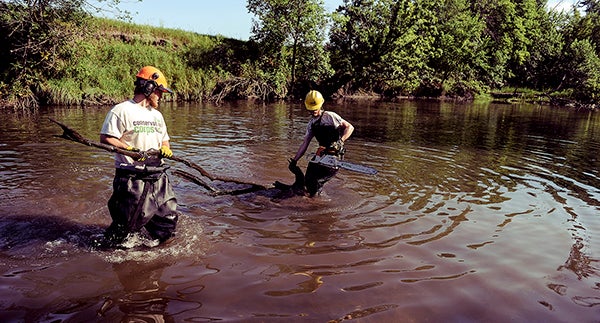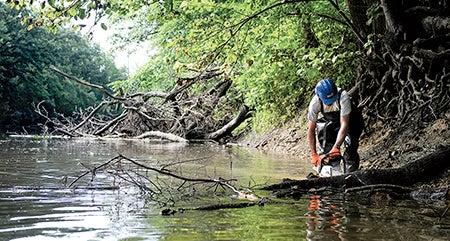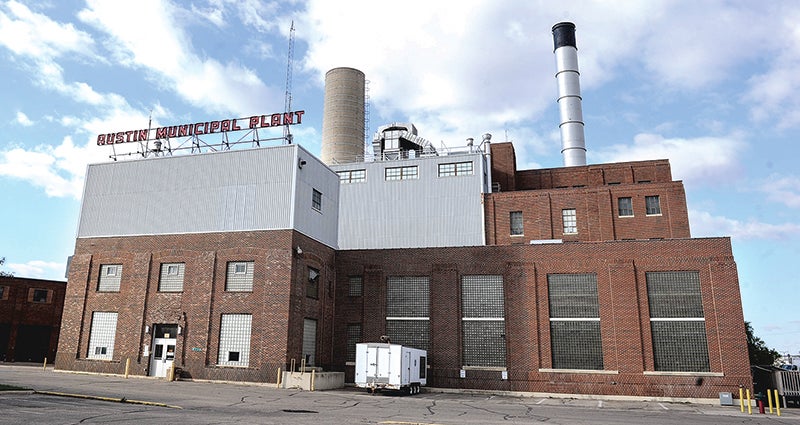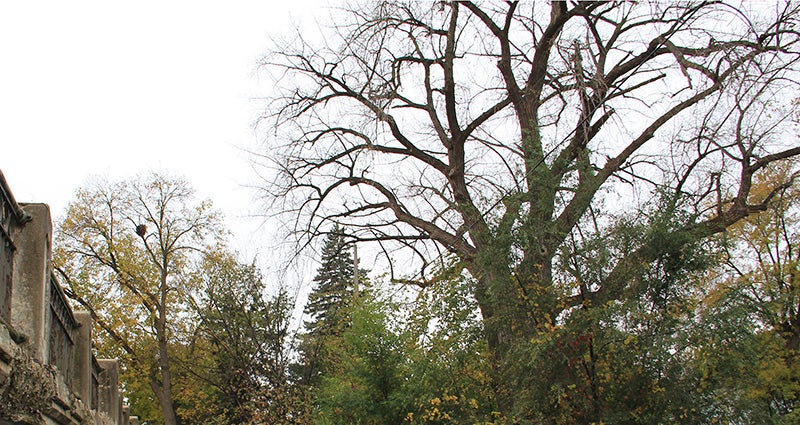Rollin’ on the river; Cleanup effort to make Cedar River more accessible
Published 11:30 am Thursday, July 24, 2014

Clint Mercer, left, and Ryan Clemo pull a large tree branch from the Cedar River Wednesday morning as a crew from the Minnesota Conservation Corp. works on clearing away some of the debris on the river. — Eric Johnson/photodesk@austindailyherald.com
Wednesday morning, four members of the Minnesota Conservation Corps gathered around Cedar River Watershed District resource specialist Justin Hanson, looking at a satellite image of the Cedar River.
It was the third day of their work on the river to clear away fallen trees and branches obscuring passage, part of a larger-reaching project to open up the river to recreational activities like canoing and kayaking.
“It’s an ongoing thing that after flood events, stuff catches on that bottom end,” Hanson explained.
At several points on the river, trees clogged the flow, creating issues for anybody trying to traverse the river.
It was possible to make it through, but it took some work in places. The volunteers from the Conservation Corps trimmed away debris, allowing the smaller pieces to flow down river.

Travis Wilder of the Minnesota Conservation Corp trims away tree debris from the shore of the Cedar River Wednesday morning as his crew made their way south from Ramsey dam.
Travis Wilder said the group began on this stretch Monday and were making good progress through Wednesday.
“Actually, it’s been going pretty fast,” he said before starting out Wednesday. “It’s not as hard when you don’t have to clear away the entire jam.”
Such crews rarely clear an entire jam, which is part logistics and part conservation. Wilder explained that it’s hard to get heavy equipment down the river that would be needed to clear an entire jam. But it’s also about finding the balance of providing habitat.
“We like to keep some of [the trees] there so we’re providing habitat and shade,” Hanson said, explaining the balancing act needed on a project like this.
“We want to keep it, but at the same time we want to keep it accessible,” he continued.
 Hanson referenced a county project a few years ago south of Austin, where crews went through and cut down and cleared away much of the growth along the banks.
Hanson referenced a county project a few years ago south of Austin, where crews went through and cut down and cleared away much of the growth along the banks.
There was concern about possible damage to the bridge, so the action was taken to try to avoid that, something Hanson understands.
“Bridges are big infrastructure costs,” Hanson said. “We would like to see some habitat, but at what cost?”
Jams can also damage the riverbanks. As trees fall and muck up the flow, water flowing around the jams swirl, eating away at the banks, sending sediment downstream.
It’s something Hanson describes as putting a thumb over the end of a hose.
Ultimately, officials hope the work on the river will improve it on several different fronts, including accessibility for those who like to canoe and kayak on the river.
Organizers were also pleased with how the effort is funded. No local tax dollars are being used for the project, as the money is coming from a Clean Water Fund grant.
“There is no local money used in this,” Hanson said. “It’s 100-percent covered through this grant.”




